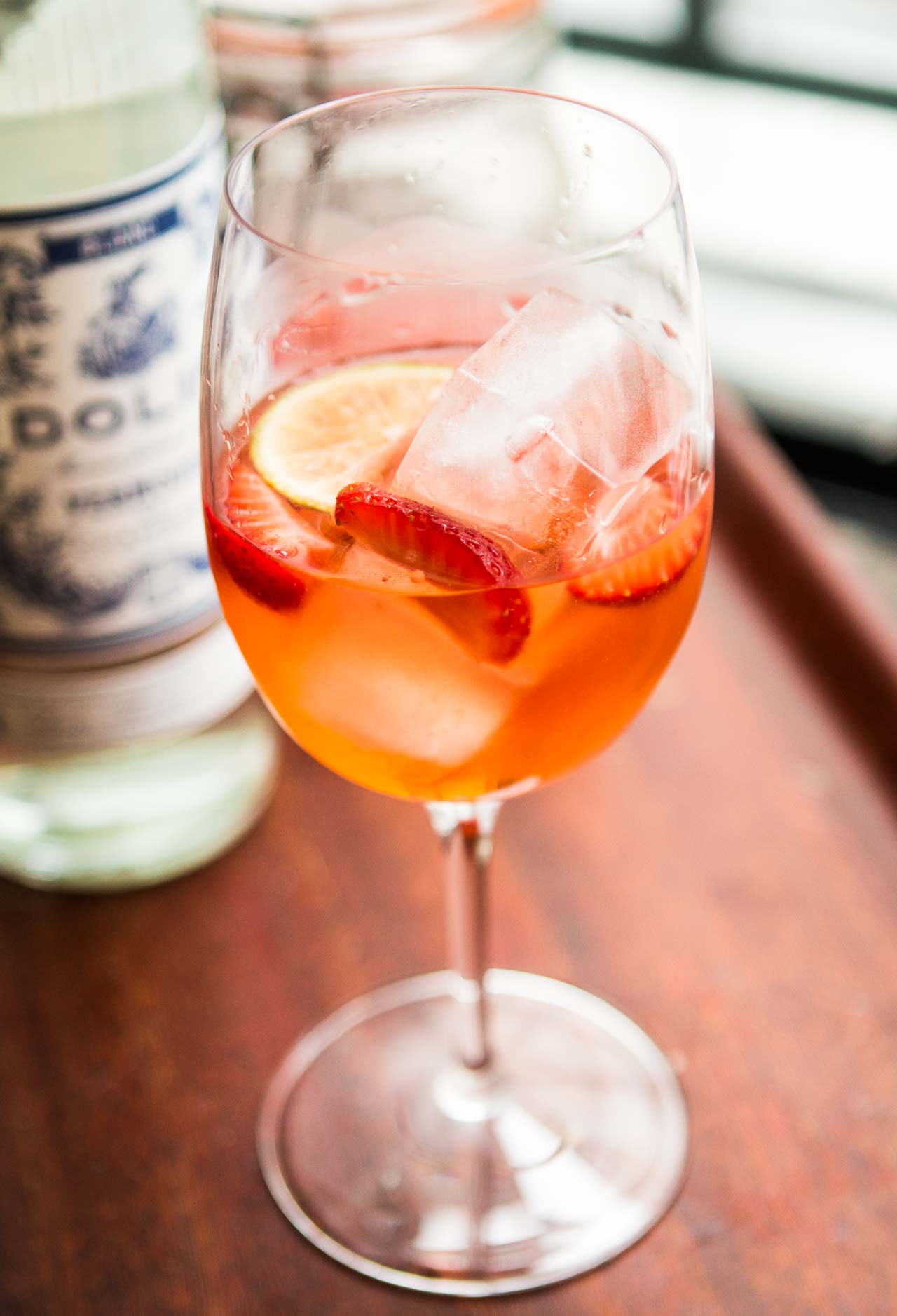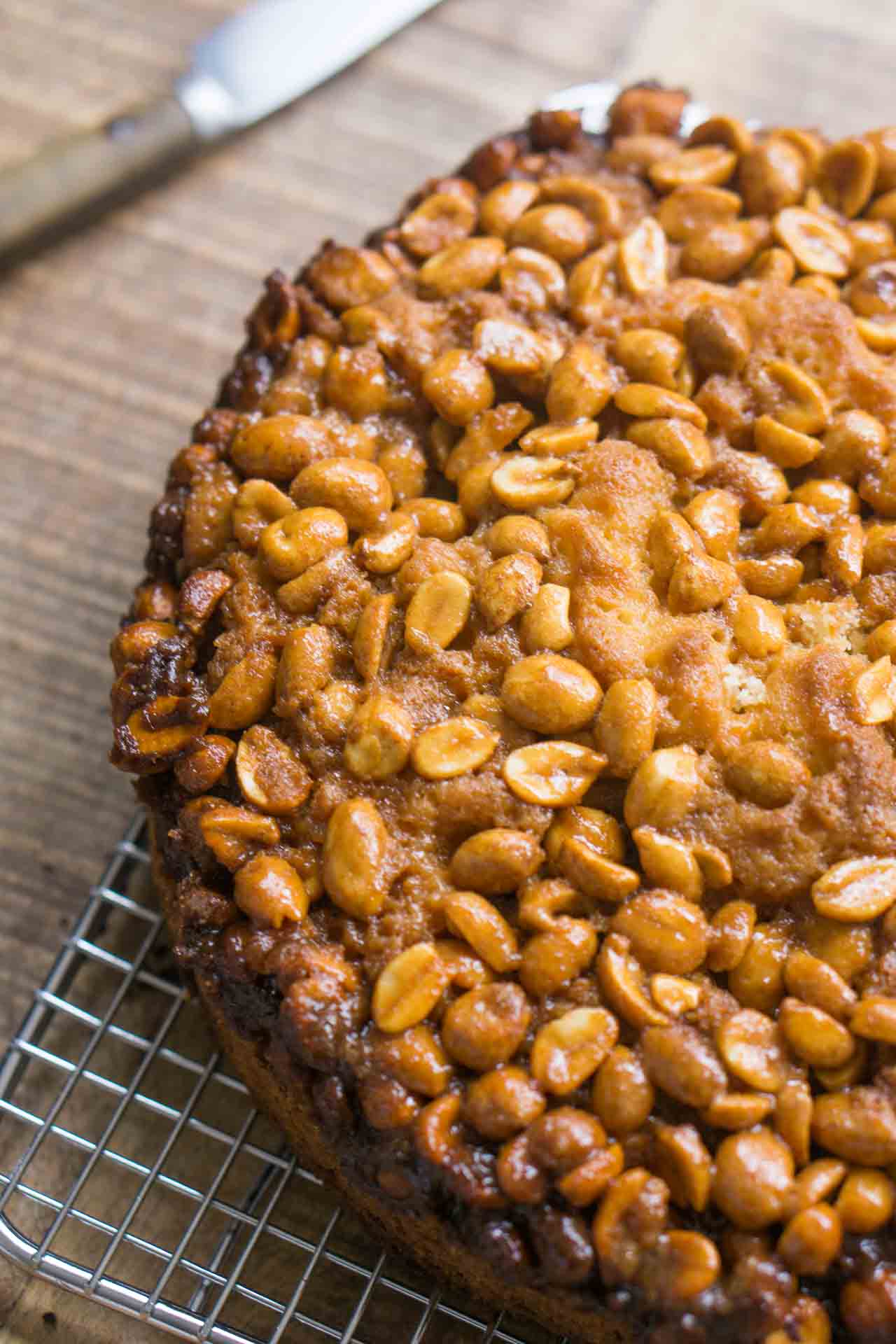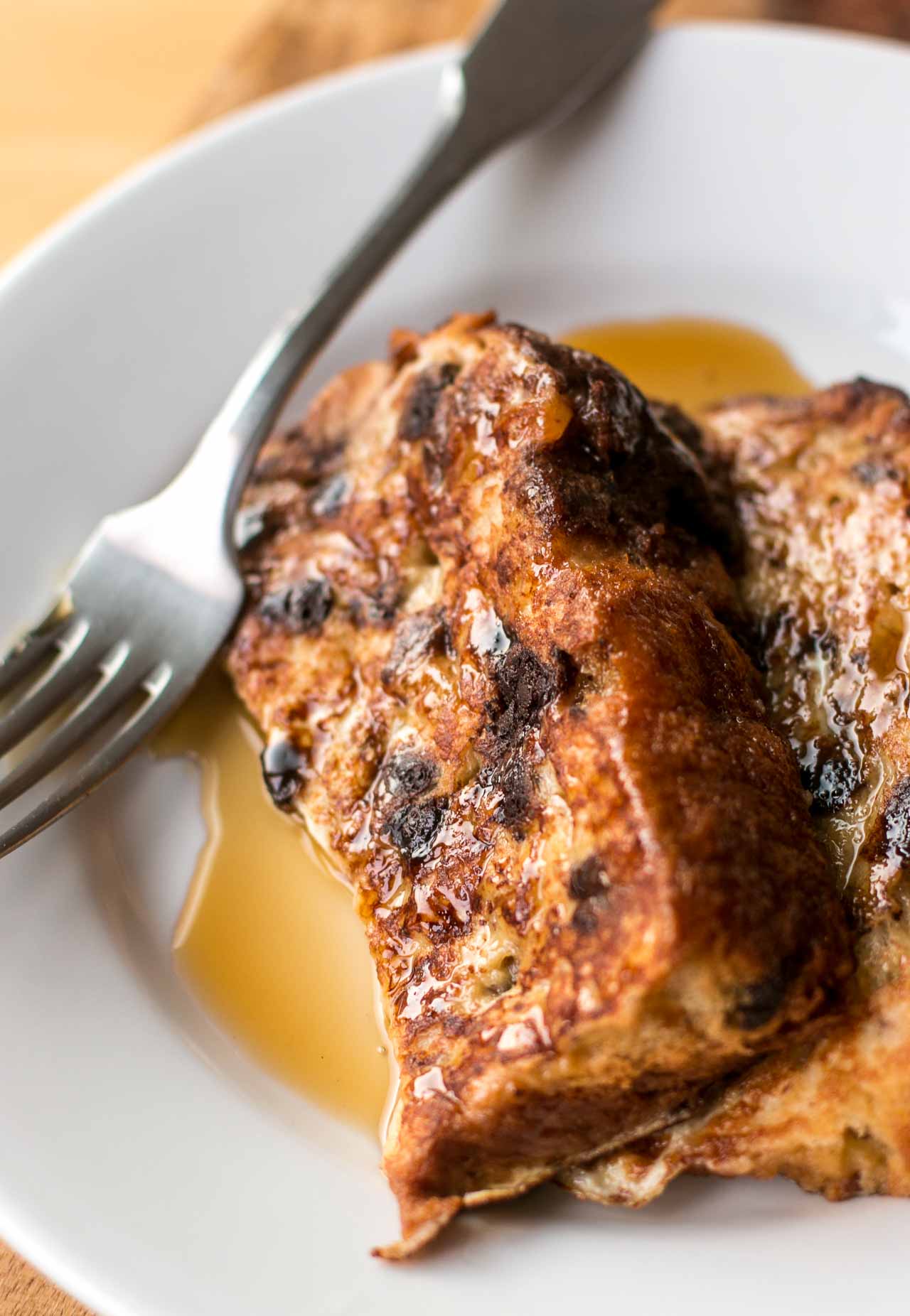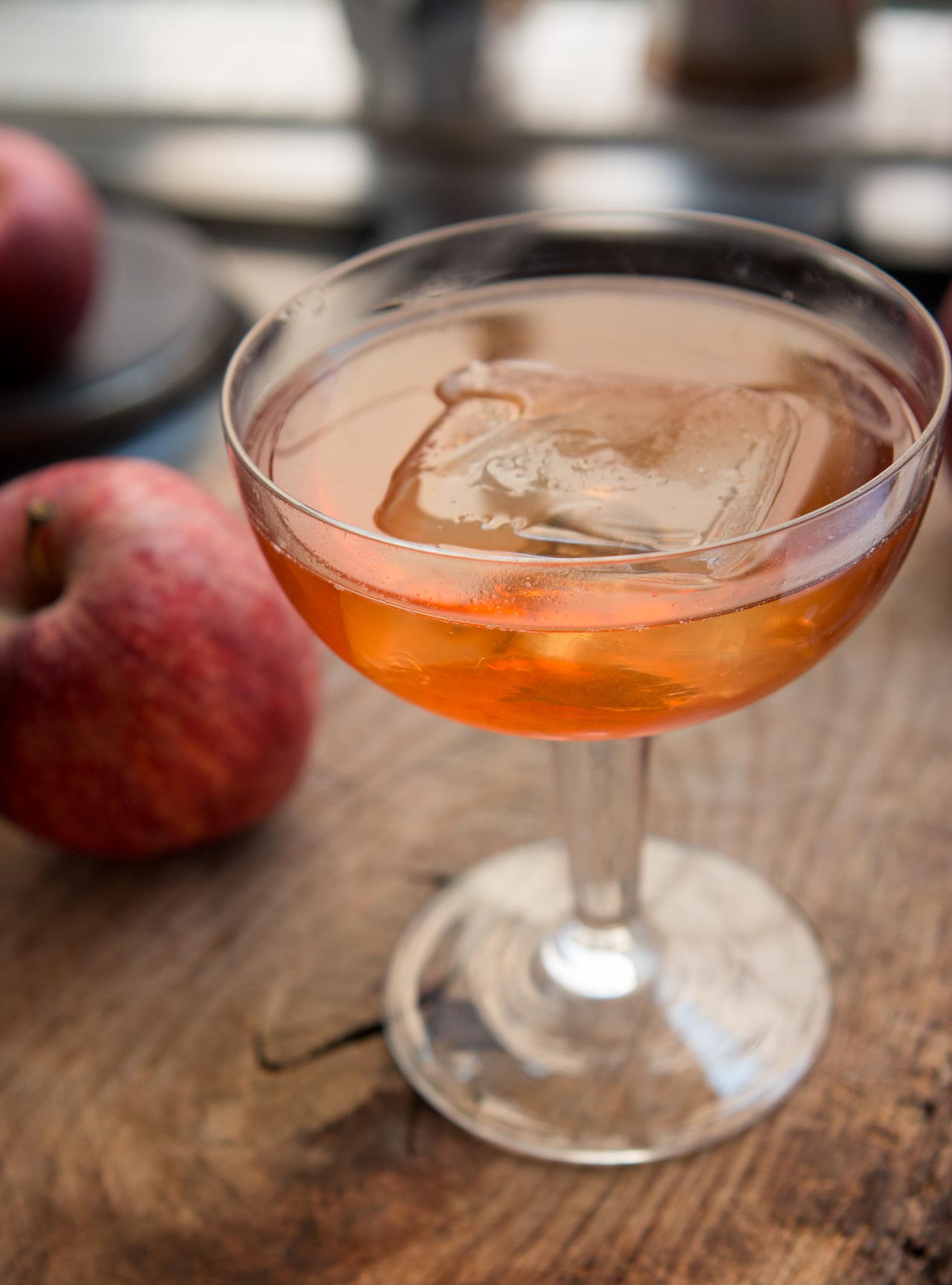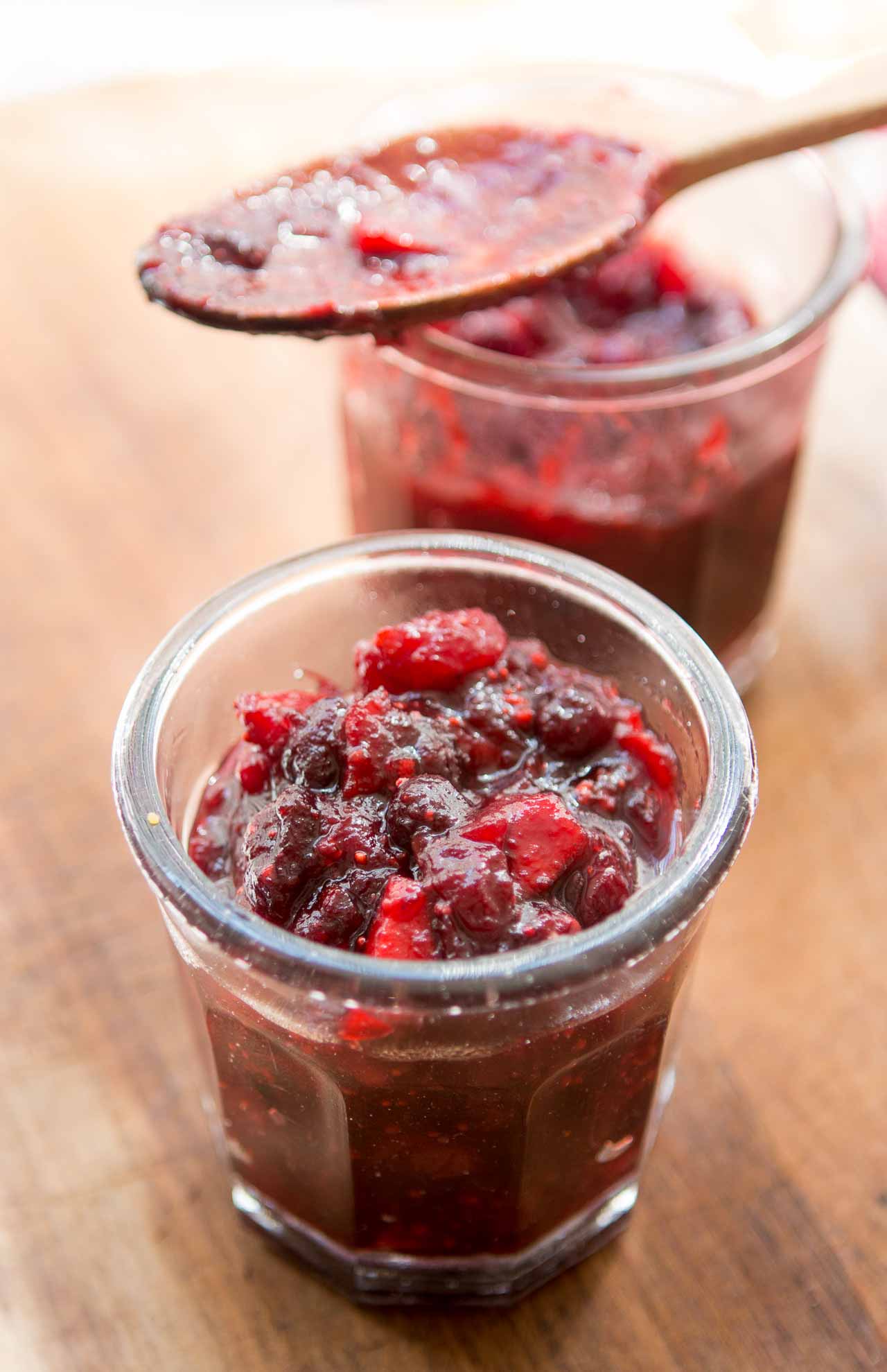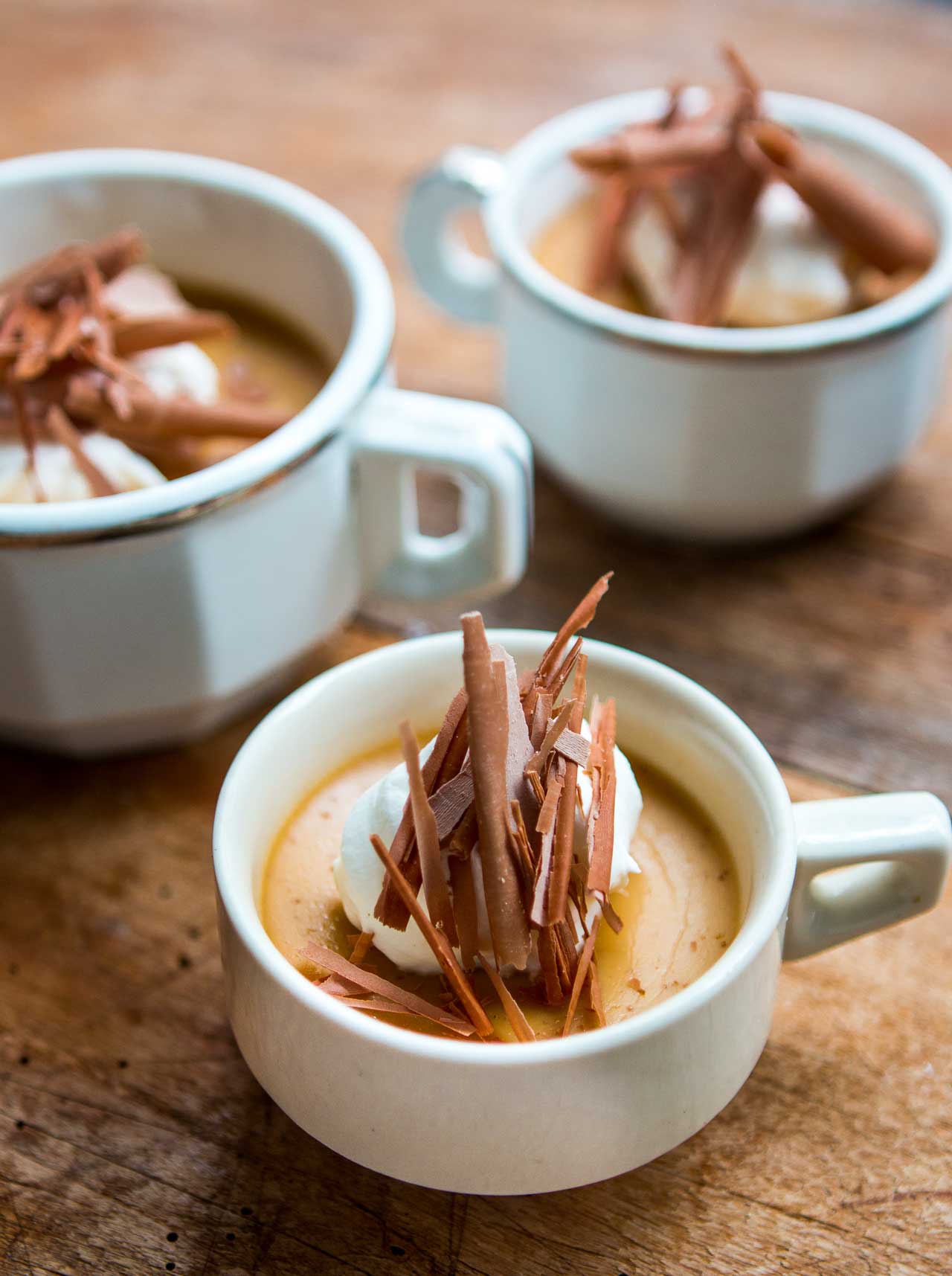Cocoa Powder FAQ: Dutch-process & natural cocoa powder
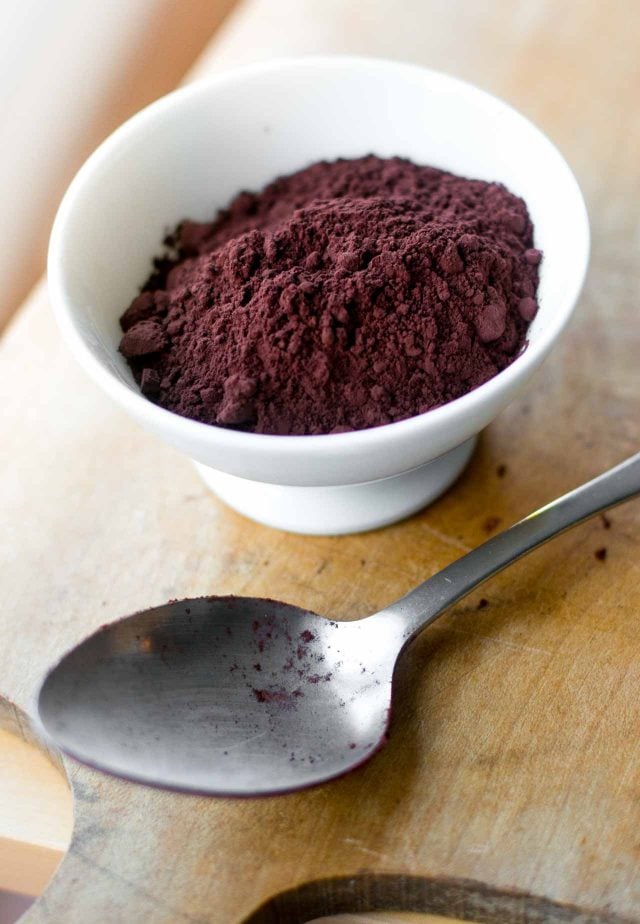
What’s the difference between Dutch-process and natural cocoa powder?
Dutch-process cocoa powder is made from cocoa (cacao) beans that have been washed with a potassium solution, to neutralize their acidity. Natural cocoa powder is made from cocoa beans that are simply roasted, then pulverized into a fine powder.
What does Dutching do?
Aside from neutralizing the acidity, Dutching cocoa powder makes it darker (see photo below, right) and can help mellow the flavor of the beans. Some artisan companies in the United States don’t Dutch-process their cocoa as they claim their cocoa beans don’t need to be acid-neutralized. Most supermarket brands of cocoa powder in America, such as Hershey’s and Nestlé, are natural cocoa powders.
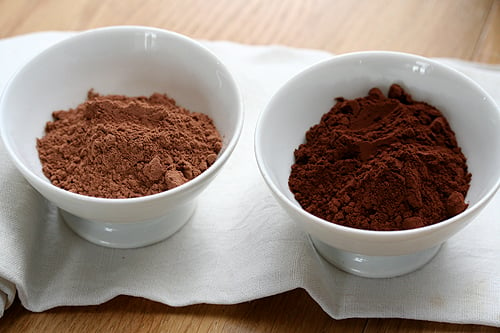
Can I use Dutch-process and natural cocoa powder interchangeably in recipes?
Because natural cocoa powder hasn’t had its acidity tempered, it’s generally paired with baking soda (which is alkali) in recipes. Dutch-process cocoa is frequently used in recipes with baking powder, as it doesn’t react to baking soda as natural cocoa does.
Many classic American recipes, like Devil’s Food Cake, use natural cocoa powder. (My recipe, which I linked to, can be made with either type of cocoa powder since many people outside the United States can’t get natural cocoa powder so I used both leavenings.) There is also a reaction between natural cocoa powder and baking soda that occurs in recipes, which creates a reddish crumb, like Devil’s Food Cake.
There are exceptions to each, of course. And according to Fine Cooking magazine, “You can substitute natural cocoa powder for Dutch-process in most recipes (though not vice versa). Flavor and texture can be affected, but generally only in recipes calling for 3/4 cup (75g) or more.” However, when a batter-based recipe calls for natural cocoa powder, do not use Dutch-process cocoa powder. But I always advise folks to follow what the recipe says. For sauces and ice creams, they can be swapped out. For cakes and cookies, I don’t recommend it, as your results may not be the same if you make substitutions.
Remember: As in any recipe, if you vary ingredients or make substitutions from what is written, results will likely not be the same.
If a recipe calls for either, the main difference is that Dutch-process cocoa will give a darker color and a more complex flavor whereas natural cocoa powder tends to be fruitier tasting and lighter in color.
Can I get natural cocoa powder in Europe?
Most cocoa powders are Dutch-processed, even though it doesn’t say so on the label. Naturata brand from Germany claims there are “no acid-regulating” agents added, so their cocoa powder is likely natural.
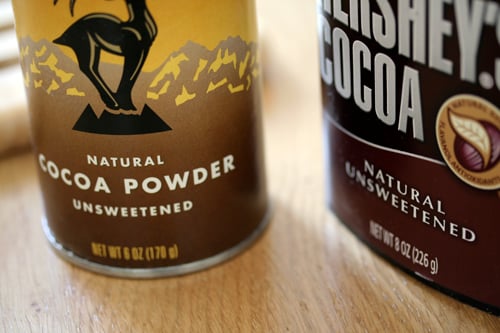
How is cocoa powder made?
Cocoa beans are roasted, then ground to a paste. Afterward, the thick paste is pressed between hydraulic plates, which squeezes out about half of the excess cocoa butter. (Cocoa beans are about 50% fat.) What’s left is a hard disk of cocoa powder, which is then grated into a fine powder. Most cocoa powders are between 20-22% fat, which is why most low-fat chocolate desserts call for cocoa powder.
What’s the best brand of cocoa powder?
I hesitate to give personal recommendations, since my taste may not be exactly the same as yours. Plus, depending on where you live, certain cocoa powders that I use may not be available where you are.
It’s best to find one with a flavor profile that you prefer, according to your personal tastes, and that fits your budget. Color, brand, country of origin, and price are not necessarily barometers of quality. Most European brands (Dutch-process) are quite good and the richest one is Valrhona (see Note, below), which I do single out as a recommended brand, which i find gives desserts and baked goods more flavor and color than other cocoa powders.
The best way to figure out which cocoa powder is good is to take a deep sniff; good cocoa powder will have a naturally sweet, but slightly acidic, smell of rough chocolate. You may also wish to try a few cocoa powder-based desserts (see Links, below), to determine which cocoa powder you like.
What does it mean to “bloom” cocoa powder?
Some recipes call for cocoa powder to be “bloomed” in hot water or another hot liquid, such as coffee. This is done to intensify the flavor of the cocoa powder by releasing flavor particles trapped in the cocoa powder, and helps them “burst forth.” Many recipes, especially cookies, don’t have liquid ingredients, so you wouldn’t use that technique.
What is “black” cocoa powder?
Black cocoa is cocoa powder that has been heavily Dutched. If you’ve ever had an Oreo cookie, the outer cookies are a good example of black cocoa. Because it has a strong, very brusque flavor, it’s best used in conjunction with another cocoa powder and is mostly used to boost color. King Arthur sells true black cocoa, as does Amazon.
Can I substitute ground chocolate for cocoa powder?
No. Ground chocolate is finely ground bittersweet or semisweet chocolate, which is mostly used for making hot beverages. It contains sugar and additional cocoa butter, and isn’t the same thing. Pure cocoa powder has no sugar or additional fats added.
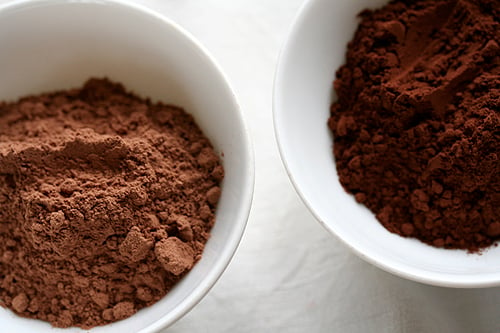
Can I use sweetened cocoa powder in recipes that call for cocoa powder?
Sweetened cocoa powder is a product, like the aforementioned ground chocolate, that’s intended to be used for making hot beverages. Do not use it in recipes that call for cocoa powder. Always check to make sure that when a recipe calls for pure cocoa powder, you’re using unsweetened cocoa powder.
Why do some recipes say to sift drying ingredients with cocoa powder in them, and others say to whisk?
Because it’s so fine, cocoa powder tends to lump up in the container. So you either need to sift or whisk it well to break up the lumps. It’s also a good idea to disperse the cocoa powder in other dry ingredients in recipes, especially if using a stand mixer, as the fine cocoa powder tends to easily fly out of the mixing bowl when mixing.
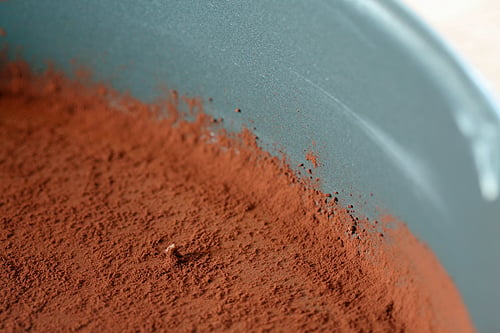
How do you store cocoa powder, and how long does it last?
Cocoa powder should be stored in a cool, dark place, but not in the refrigerator because the humidity can promote spoilage.
Because of its low moisture content, cocoa powder will keep up to three years. To ensure consumers use the cocoa powder while it’s in its prime, most manufacturer’s list an expiration date on their containers.
Can I dust a cake pan with cocoa powder instead of flour?
Yes, for chocolate cakes, it’s fine (and sometimes desirable) to dust the pan with cocoa powder as you would use regular wheat flour. This is a good tip also for converting recipes to gluten-free.
Simply add a spoonful of cocoa powder to the greased pan, roll it around, shaking the pan to ensure an even layer of powder, then tap out any excess.
Related Links and Recipes
Why you should use aluminum-free baking powder
Cocoa and Baking Chocolate (King Arthur)
Cocoa Powder (Perfect Pantry)
American Baking Ingredients in Paris
What is Dutch-process cocoa powder? (Baking Bites)
Best Cocoa Brownies (Smitten Kitchen)
Coenraad Johannes van Houten: Inventor of Dutch-process cocoa (Wikipedia)
Chocosphere (Source of high-quality cocoa powders)
Cocoa Powder (Fine Cooking)
What is Dutch-process cocoa? (The Kitchn)
All About Powdered Chocolate (Culinate)
Flours, Nuts, and Cocoa Powders (Amazon Store)
Note: I generally don’t call for specific brands of products. There are a variety of reasons why I don’t, but mainly it’s because readers live in different parts of the world and may or may not have access to certain products. Plus I don’t want people to scramble for ingredients, or not be able to make recipes. But I do make exceptions if a particular brand makes a noticeable difference.
Although not imperative to use, I’ve been baking with Valrhona cocoa powder, since it’s darker and richer than other Dutch-process cocoa powders, and I am happier with the results than when I use others. It’s also available internationally. (I buy their cocoa powder at G. Detou, in Paris.)
It does cost more than other Dutch-process cocoa powders, but an economical way to obtain it is to purchase a 3kg box, available at Amazon and Chocosphere. It normally comes in 3 separate kilos bags (#2.2 each), so you can split the purchase with other bakers.








